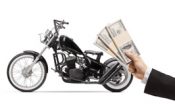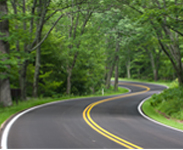Stage 1 Upgrade
Anyone with a motorcycle has a desire for more! The motorcycle is made by a manufacturer with standardized specifications. The manufacturers themselves offer performance packages for more money. What a surprise? More performance equals more money spent. Luckily, staging an engine is not always that difficult. The higher the stage the more involved and costly the package will cost.
Generally speaking, a Stage 1 upgrade performance package is more bolt on. In the first stage, the manufacturer wants to help the engine breathe better and get rid of exhaust faster. Due to many EPA restrictions and DOT laws, a manufacturer must build a restricted breathing motorcycle. Air filters are not free flowing and the exhaust is baffled to comply with noise standards. By doing a performance upgrade, the owner may void manufacturer warranties and break noise pollution laws. These upgrades are done at the risk of the owner of the motorcycle. DO NOT attempt to do a performance upgrade if you are not comfortable with that kind of work and if you do not wish to void a warranty or service contract.
More air, more fuel, more spark and faster evacuation of exhaust gasses mean more power. There are a bunch of easy ways to accomplish this without really digging into the motor of a motorcycle. Most upgrades are just replacements of external parts.
An air cleaner upgrade is as easy as swapping out a more free flowing air filter element. The whole air filter assembly itself can also be swapped for a more aerodynamic air filter. A velocity cone can be inserted in the air filter for air diversion for higher pressure. This allows intake air to flow into the motor at a much higher rate. Scoops and hyper-chargers can also force air into the intake.
This site and articles contained herein are provided for general informational purposes only and are not a substitute or intended as professional advice. Please be sure to refer to your owner’s manual or consult a mechanic for information specific to your motorcycle. The information contained on this site and articles contained herein are provided on an “as is” basis with no guarantees of completeness, accuracy, usefulness or timeliness and without any warranties of any kind whatsoever, express or implied. Rider Insurance Company and its affiliates (together, “Rider”) assume no responsibility for any errors or omissions in the content of this site and articles contained herein. Any action taken upon this information is strictly at your own risk and Rider will not be liable for any losses or damages in connection with your use of this site and articles. Additional terms and conditions apply and are available at https://www.rider.com/plymouth-rock-assurance-general-terms-and-conditions/.

Exhaust systems are also easily upgraded. Performance mufflers or slip-ons can be swapped in the rear tailpipe section. The entire exhaust can also be swapped for a larger diameter pipe with smooth radius bends. This allows the exhaust gases to escape faster from the engine. Equal length header pipes will produce the best performance. A less restrictive baffle will also produce more horsepower. Drag pipes would seem to be the logical choice for performance, but they actually are not. They have very little back pressure and it affects bottom-end performance. They are great at high rpms, but off the line, drag pipes hurt performance. Not to mention, they also violate most noise pollution laws.
With more air coming in and more air going out, a “lean” condition will form. With less restriction on air moving in and out of the engine, the mixture of fuel and air will change. Now that there is more air, the condition is called “lean”. The mixture will have to be modified to “richen” it up. This will add more fuel to the mixture, making the engine run cooler and have better performance. On a carbureted motorcycle, the fast and slow jets will need to be altered to allow more gas into the carburetor. On a fuel injected bike, the computer will need to be remapped in order to allow more gas into the motor.
With all that air and gas coming into the engine, a hotter spark will ignite it faster. A simple upgrade is new spark plugs with a hotter spark. A more labor intensive upgrade is to replace the ignition system completely with a fully adjustable ignition system. New performance ignition systems are relatively simple to install. They come fully contained within the triggering system and involve wiring to starter button, battery and ignition coil. A single-fire system ignites one cylinder at a time allowing the coil to recharge for a hotter ignition the next time it fires.
All these modification are external engine upgrades that can be done by a do-it-yourselfer. These changes can help your motorcycle run faster and more efficiently. Always consult the manufacturer’s service manual when attempting any engine work. It will give you base lines for timing, jet settings and ratios. Never attempt to do any of this work if you will void your warranty. Most engine work and parts are not usually under coverages or warranties, though external parts may be covered.
Plymouth Rock Assurance is a marketing name used by a group of separate companies that write and manage property and casualty insurance in multiple states. Motorcycle insurance in New Jersey and Pennsylvania is underwritten by Rider Insurance Company. Each company is financially responsible only for its own insurance products. Actual coverage is subject to the language of the policies as issued by each separate company.





